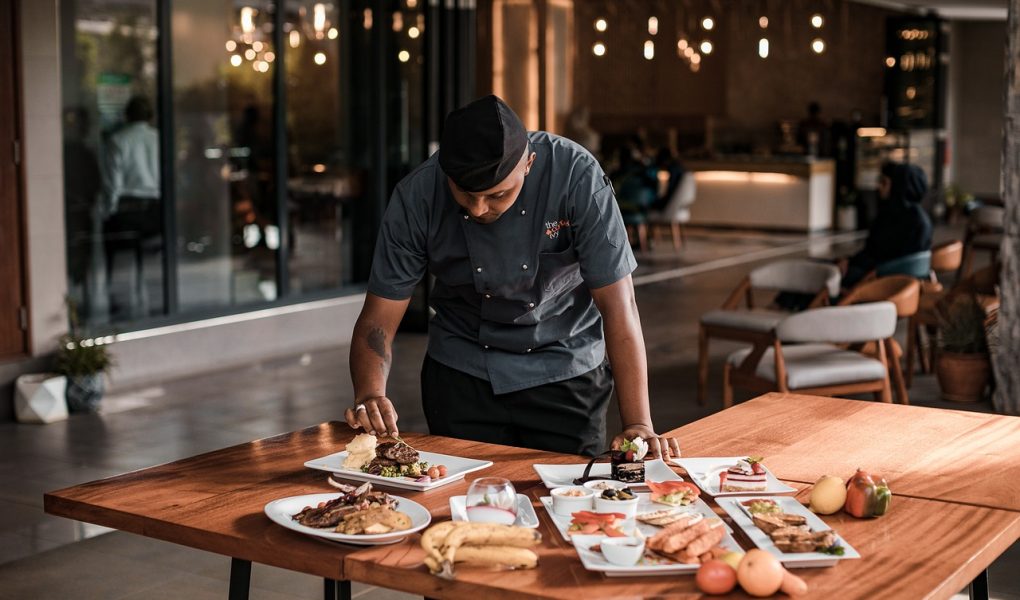In our super fast-paced and technology-driven world, restaurants have to find more and more innovative ways to engage with their customers and provide top-notch service.
One of the technologies that has been grabbing popularity is ChatGPT, an advanced language model developed by OpenAI.
With ChatGPT, restaurants can enhance customer interactions, streamline operations, and deliver personalized experiences like never before.
In this blog post, we’ll explore how your restaurant can implement ChatGPT to its fullest potential and reap the benefits of this cutting-edge technology.
Understanding ChatGPT.
Before diving into the implementation process, let’s briefly understand what ChatGPT is. ChatGPT is a powerful language model built upon artificial intelligence techniques. It’s been trained on a vast amount of diverse data and can generate human-like text responses to a wide array of prompts. Think of it as a virtual assistant with an advanced understanding of language.
Benefits of Using ChatGPT in Restaurants.
- Enhanced Customer Service: With ChatGPT, your restaurant can offer 24/7 customer support, answering common questions, assisting with reservations, and addressing concerns promptly. Customers will appreciate the quick and accurate responses, leading to increased satisfaction and loyalty.
- Personalized Recommendations: ChatGPT can analyze customer preferences and previous interactions to offer personalized recommendations for dishes, beverages, and even special offers. This personalized touch can significantly improve the overall dining experience and encourage repeat visits.
- Seamless Online Ordering: Integrating ChatGPT into your website or mobile app allows for seamless online ordering. Customers can simply chat with the AI to place their orders, making the process more convenient and efficient.
- Efficient Table Management: ChatGPT can assist in managing reservations and waitlists, reducing human errors and optimizing table turnover. This ensures a smoother dining experience for your customers.
- Automated Marketing: Use ChatGPT to send out automated marketing messages, promotions, and event invitations to customers. This enables targeted marketing efforts that resonate with individual preferences.
- Feedback Collection: ChatGPT can be utilized to gather feedback from customers after their dining experience. This valuable input can help your restaurant identify areas for improvement and tailor your services accordingly.
- Language Support: If your restaurant caters to international customers or tourists, ChatGPT can provide support in multiple languages, breaking down language barriers and fostering inclusivity.
Implementation Steps.
Now that we’ve explored the benefits, let’s delve into the step-by-step implementation process:
Step 1: Define Objectives and Use Cases.
Defining clear objectives and use cases is the foundational step in implementing ChatGPT effectively for your restaurant. Without a well-defined purpose, the AI integration might not yield the desired results. In this step, we’ll explore how to set specific objectives and identify potential use cases for ChatGPT in your restaurant.
1.1 Setting Objectives.
1. Increase Customer Engagement: One of the primary objectives could be to enhance customer engagement. ChatGPT can act as a friendly virtual assistant, answering questions, engaging in casual conversations, and providing recommendations. Increased engagement leads to a positive perception of your restaurant and encourages customers to interact more frequently.
2. Improve Customer Service: Improving customer service is another crucial objective. ChatGPT can efficiently handle common inquiries like operating hours, location, menu options, and dietary information. By providing prompt and accurate responses, customers feel well-cared for and are more likely to trust your restaurant.
3. Streamline Ordering Process: If your restaurant offers online ordering, ChatGPT can be integrated to streamline the process. Customers can place orders, customize dishes, and check order status seamlessly through the AI interface. This objective aims to simplify the ordering experience, reducing friction and increasing order frequency.
4. Personalize Customer Experiences: Personalization can significantly impact customer loyalty. By analyzing past interactions, order history, and preferences, ChatGPT can offer personalized recommendations and promotions tailored to each customer’s tastes. The objective here is to create a sense of individualized attention and make customers feel valued.
5. Optimize Table Management: If your restaurant takes reservations or manages waitlists, ChatGPT can assist in automating these tasks. The AI can handle reservation inquiries, check availability, and provide estimated wait times. The objective is to optimize table turnover and create a more organized dining experience.
1.2 Identifying Use Cases.
1. Pre-Visit Information: ChatGPT can provide essential information to customers before their visit, such as location, parking details, dress code, and accessibility options. This use case prepares customers for their dining experience and reduces the likelihood of misunderstandings.
2. Menu Assistance: Customers often seek clarification about menu items, ingredients, and allergen information. ChatGPT can efficiently handle these queries, ensuring customers can make informed choices based on their dietary preferences and restrictions.
3. Online Ordering Support: For restaurants with online ordering systems, ChatGPT can guide customers through the ordering process, suggest popular dishes, and offer complementary items, enhancing the overall online ordering experience.
4. Reservation and Waitlist Management: Allow customers to make or modify reservations through ChatGPT. Additionally, the AI can manage waitlists, notify customers when their table is ready, and handle table status updates.
5. Special Offers and Promotions: ChatGPT can inform customers about ongoing promotions, seasonal specials, and loyalty programs. This use case helps boost sales and encourages repeat business.
6. Feedback Collection: After a dining experience, ChatGPT can prompt customers to provide feedback or participate in surveys. This valuable input helps your restaurant identify strengths and weaknesses, enabling you to make informed decisions for improvement.
7. Customer Support: Deploy ChatGPT to handle customer inquiries, complaints, and general assistance. The AI can provide real-time support, resolving common issues promptly and efficiently.
1.3 Prioritizing Objectives and Use Cases.
After defining objectives and identifying use cases, prioritize them based on their impact and feasibility. Consider the objectives that align with your restaurant’s core values and long-term vision. Start by implementing a few high-impact use cases and expand gradually as you gain more experience with ChatGPT.
Step 2: Choose the Right Platform.
Select a suitable platform for deploying ChatGPT. You can use OpenAI’s API to integrate ChatGPT into your existing systems or explore ready-to-use chatbot platforms that support AI integration. Ensure the platform aligns with your restaurant’s technical capabilities and requirements.
Step 3: Train the AI Model.
If your chosen platform allows fine-tuning of the AI model, train it with restaurant-specific data to improve its performance. Use past customer interactions, menu data, and frequently asked questions to fine-tune the language model and make it more restaurant-savvy.
Step 4: Develop a Conversational Flow.
Design a natural and user-friendly conversational flow for ChatGPT. Consider the most common questions and scenarios customers might have when interacting with the AI.
Make the responses concise, informative, and aligned with your restaurant’s brand voice.
Step 5: Test Thoroughly.
Before using ChatGPT with customers, conduct rigorous testing to ensure its accuracy and reliability. Simulate various scenarios and interactions to uncover any potential issues and fine-tune the AI accordingly.
Step 6: Implement Security Measures.
As ChatGPT might handle customer data, it’s crucial to implement robust security measures. Ensure that customer information remains confidential and comply with relevant data protection regulations.
Step 7: Launch and Monitor.
Once all preparations are in place, launch ChatGPT on your restaurant’s website or app. Monitor its performance regularly, gather user feedback, and make necessary improvements to enhance the AI’s capabilities continuously.
Best Practices for ChatGPT Integration.
- Transparency: Clearly inform customers when they are interacting with ChatGPT and not a human agent. Transparency builds trust and helps manage customer expectations.
- Fallback Plan: Design a fallback plan for scenarios where ChatGPT might not have a suitable response. Redirect customers to live support or provide alternative means of assistance.
- Continuous Improvement: Regularly update and refine ChatGPT based on user feedback and emerging customer needs. AI models can be continually improved to provide a better experience over time.
- Human Oversight: While ChatGPT can handle many tasks, having human oversight is essential to handle complex or sensitive customer inquiries and ensure quality service.
- Avoiding Bias: Be mindful of potential biases in the AI model’s responses. Train ChatGPT on diverse sets of data to reduce bias and promote inclusive interactions.
Conclusion.
Integrating ChatGPT into your restaurant can revolutionize the way you interact with customers, improve efficiency, and create a more personalized dining experience.
By following the implementation steps and best practices outlined in this blog post, you can harness the full potential of ChatGPT to elevate your restaurant’s services and build lasting customer relationships.
Embrace the power of AI-driven conversation and stay ahead in the competitive restaurant industry!





